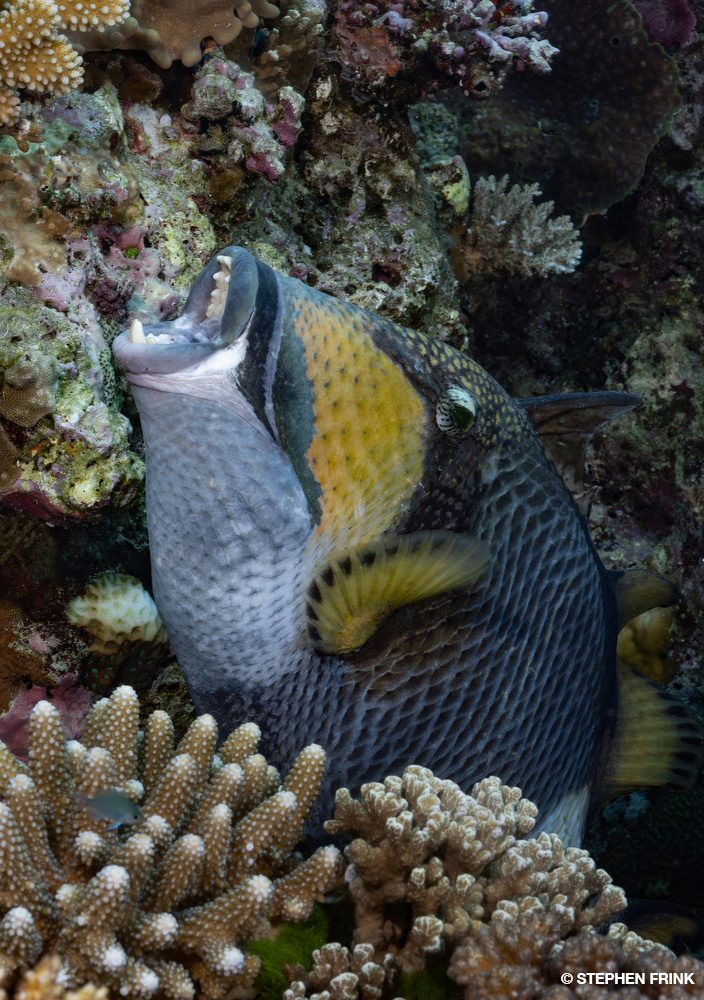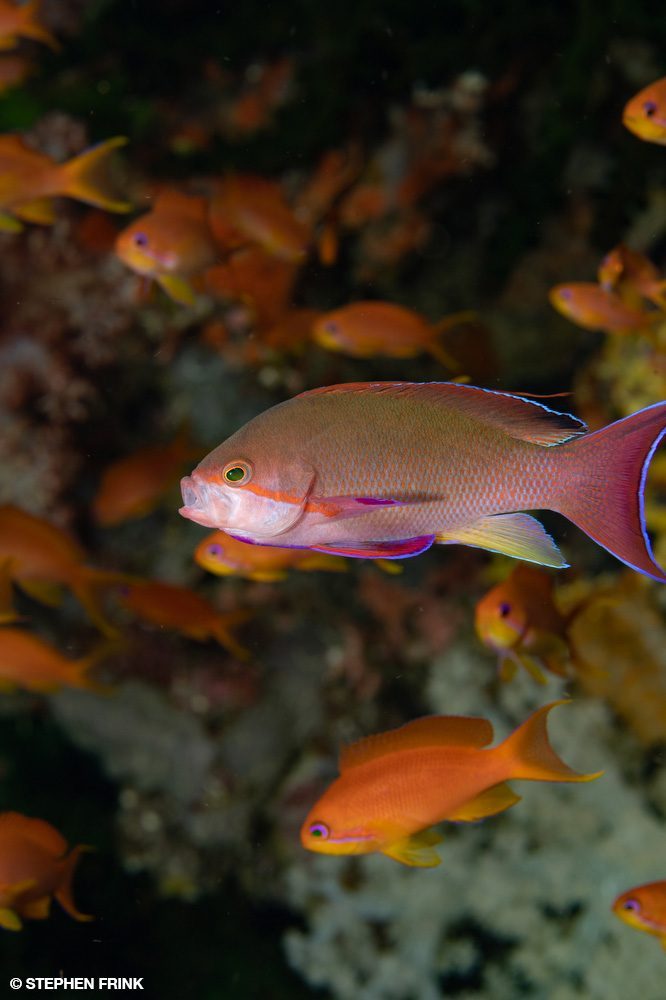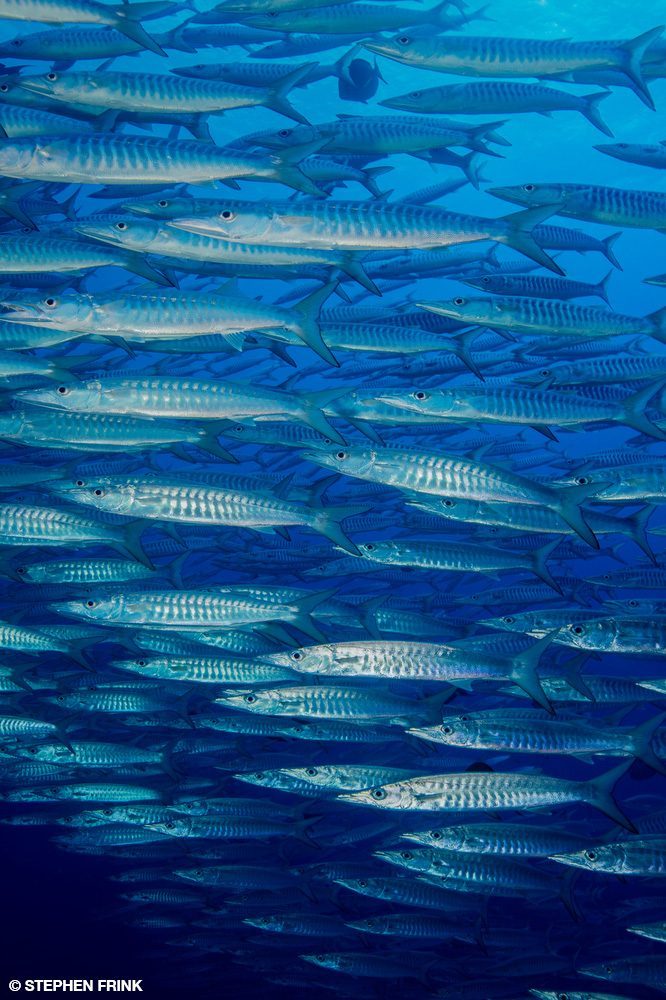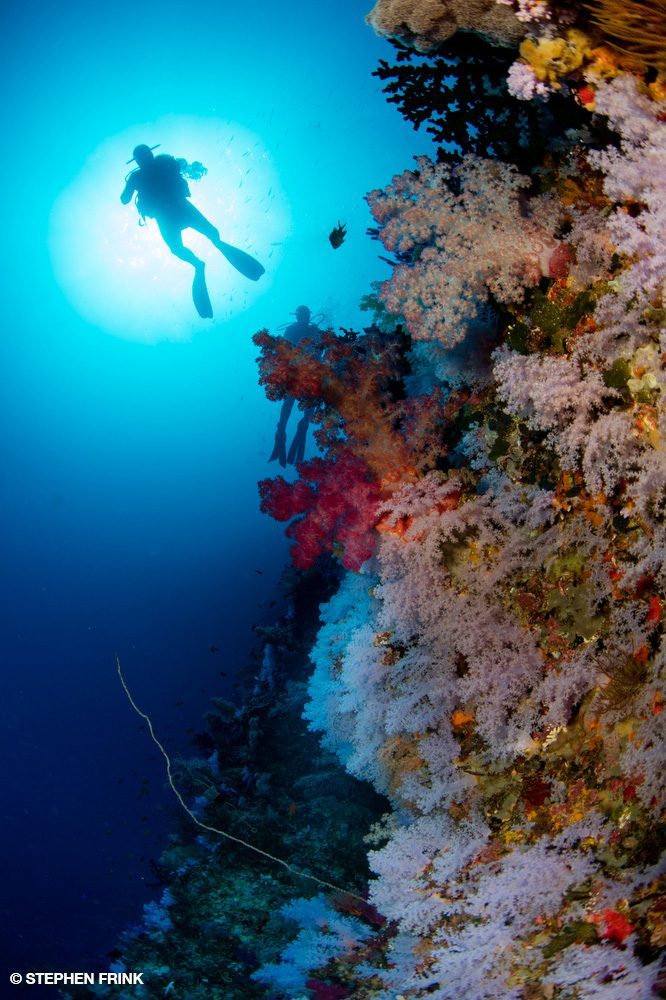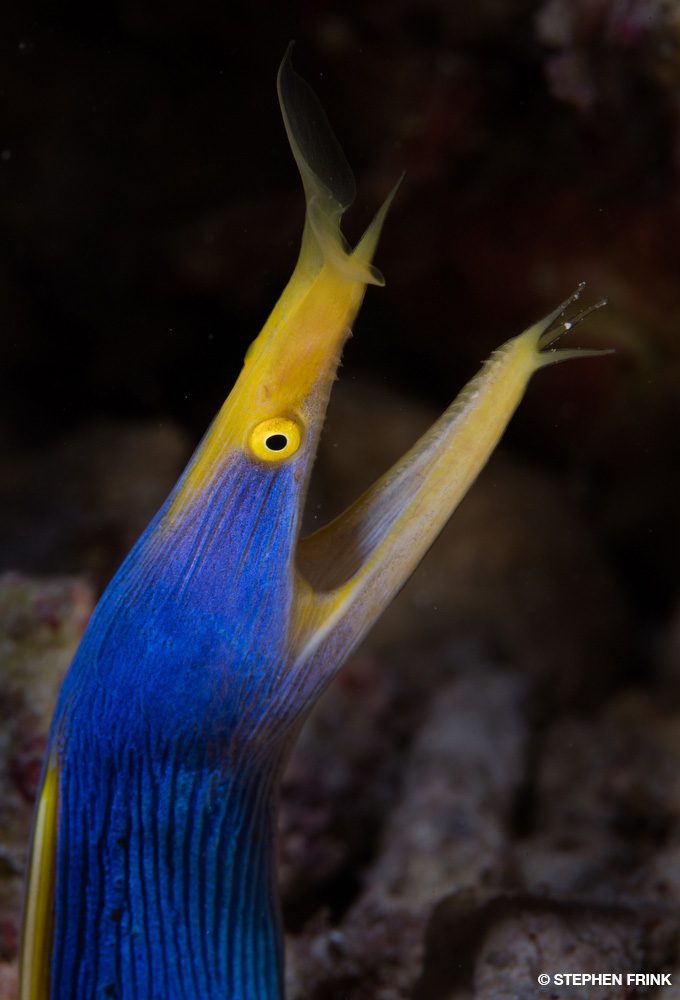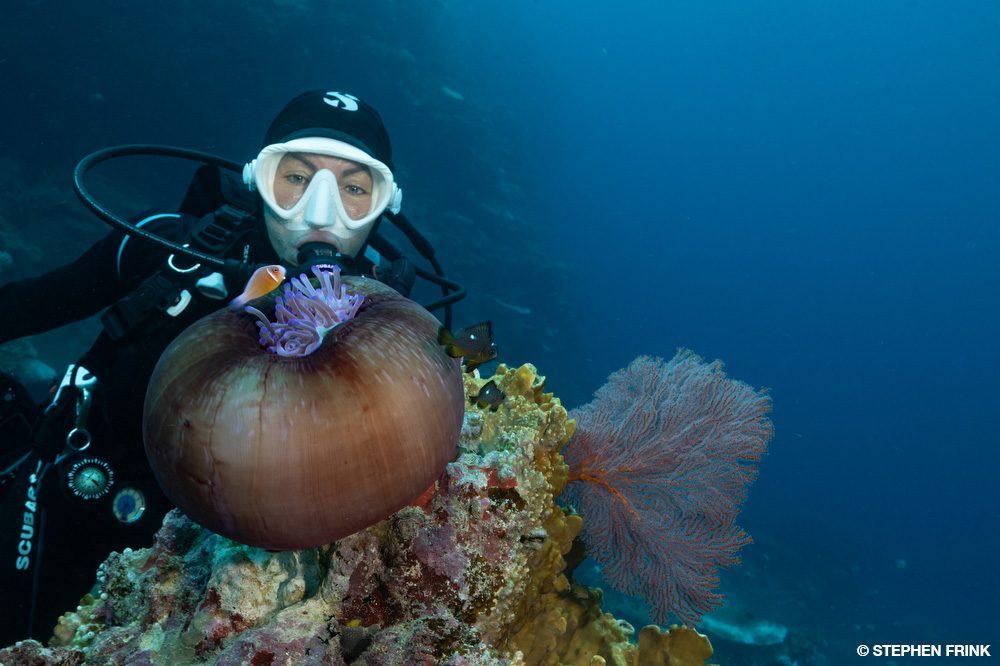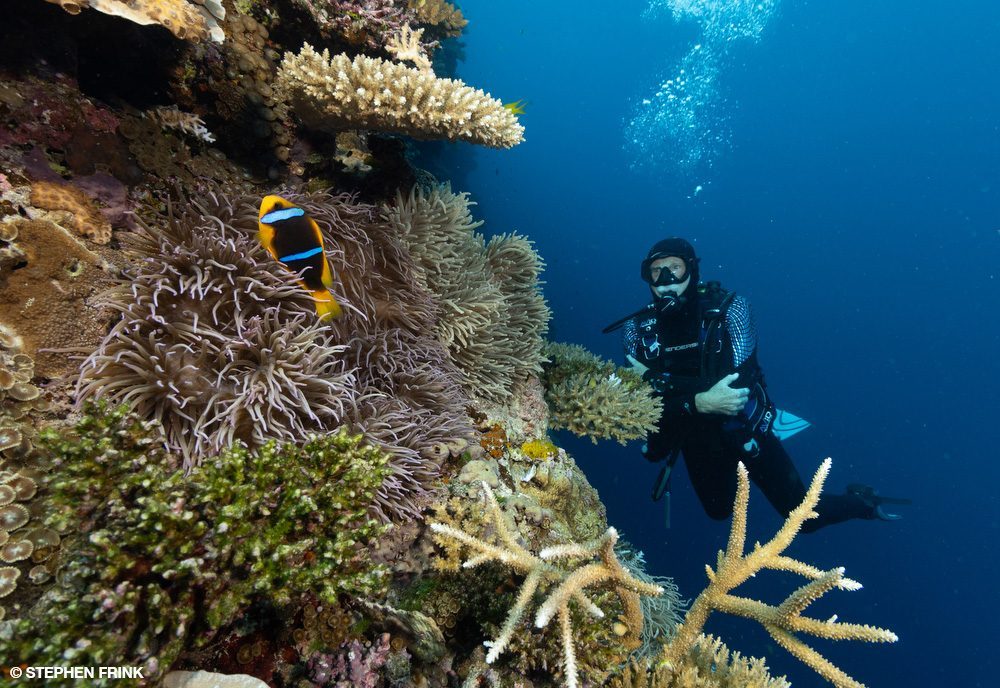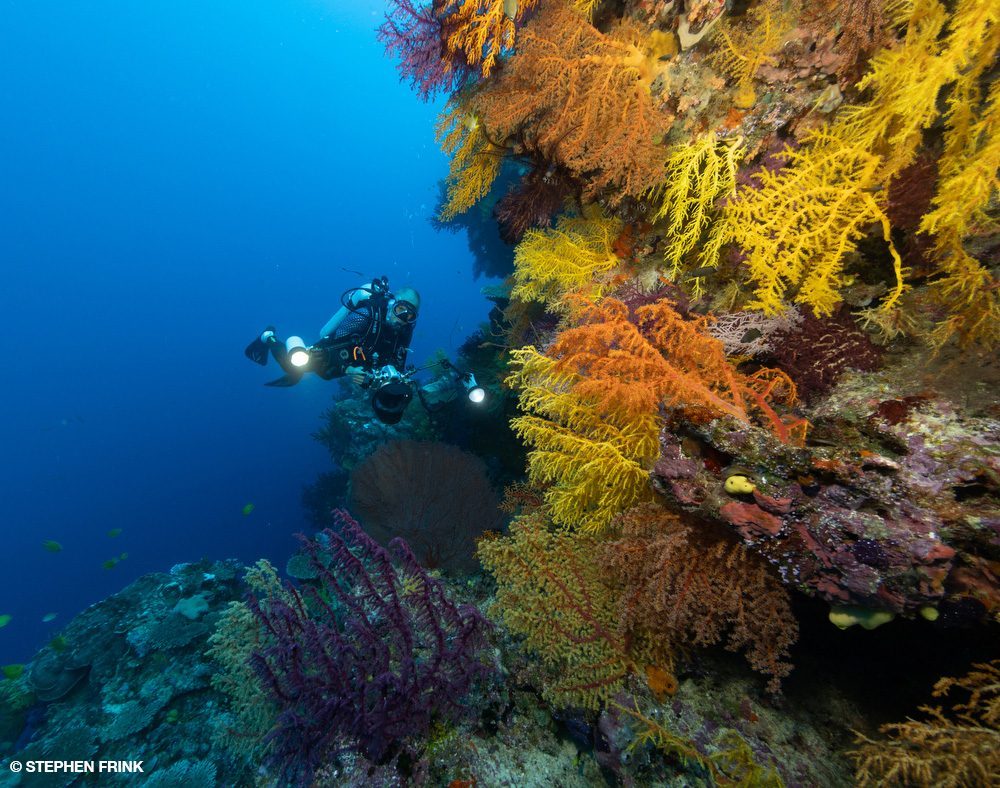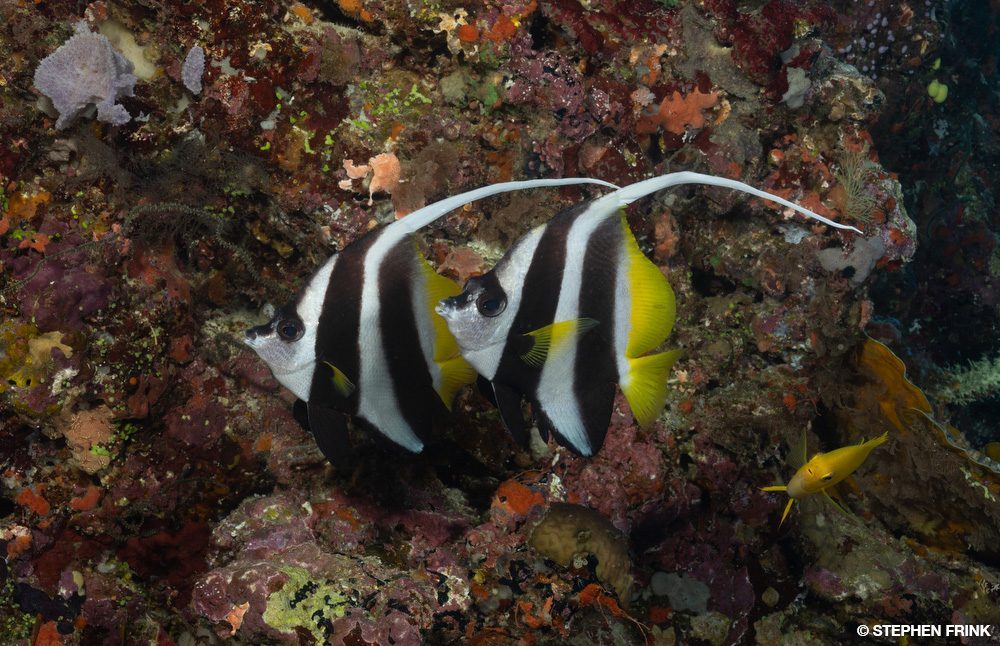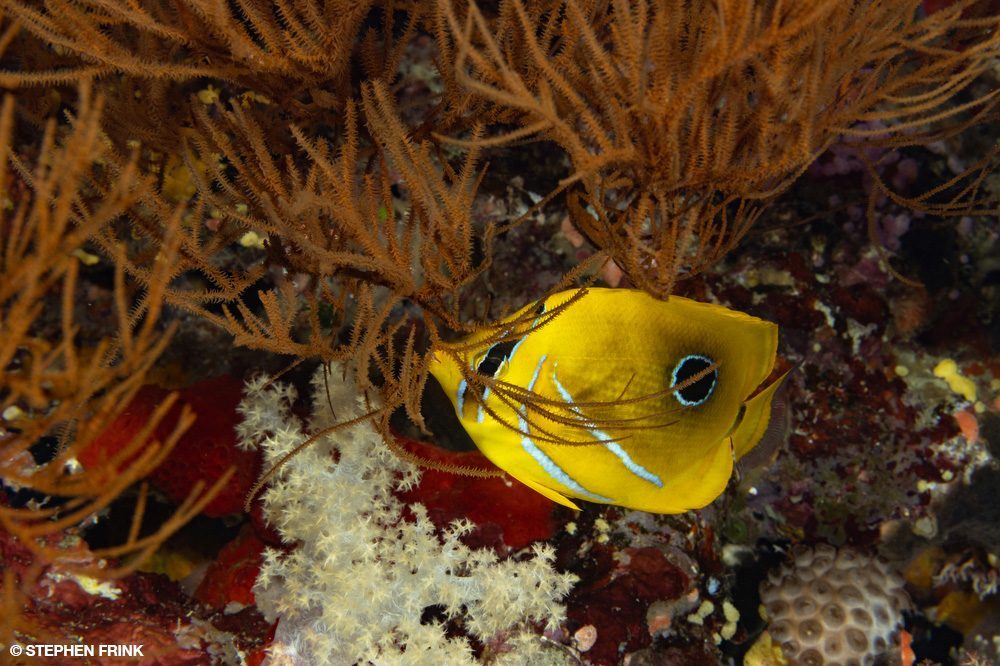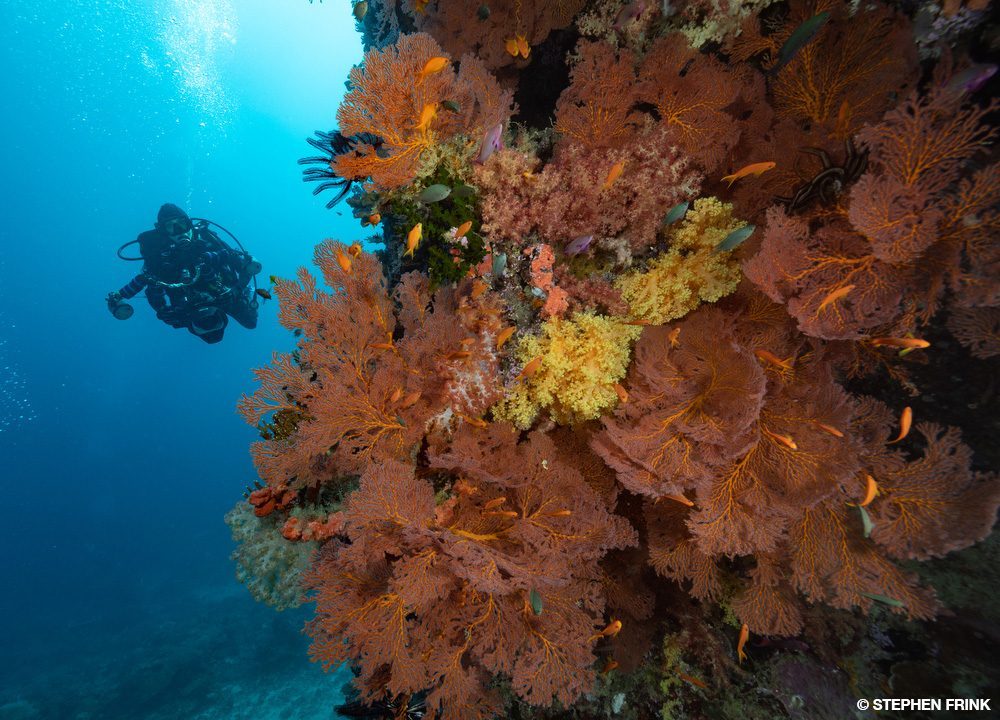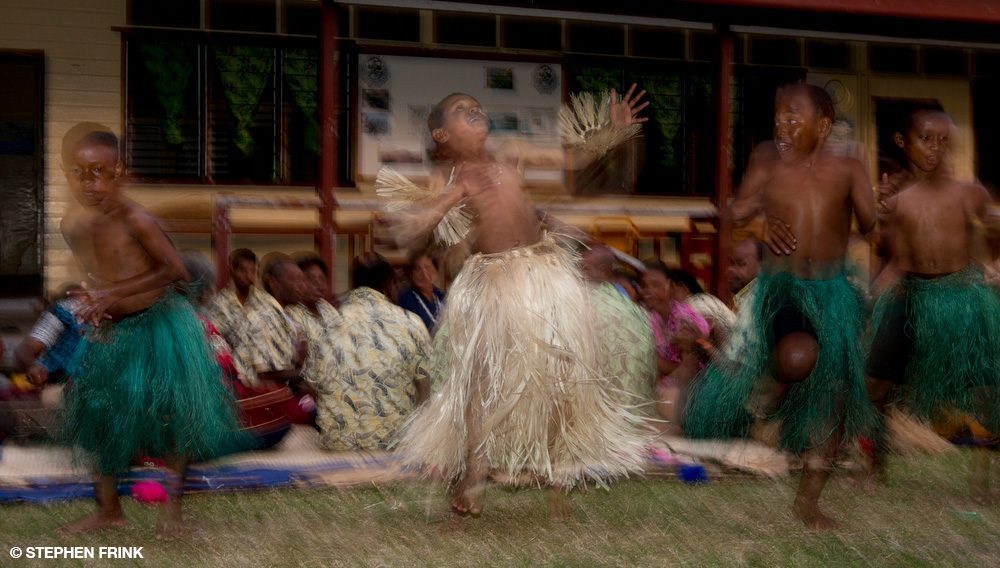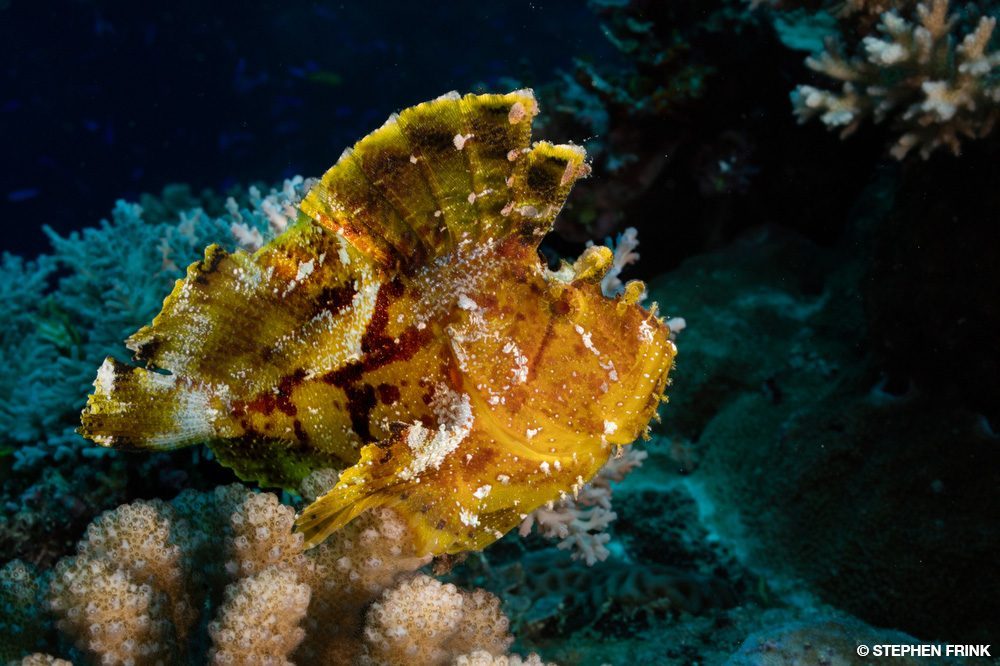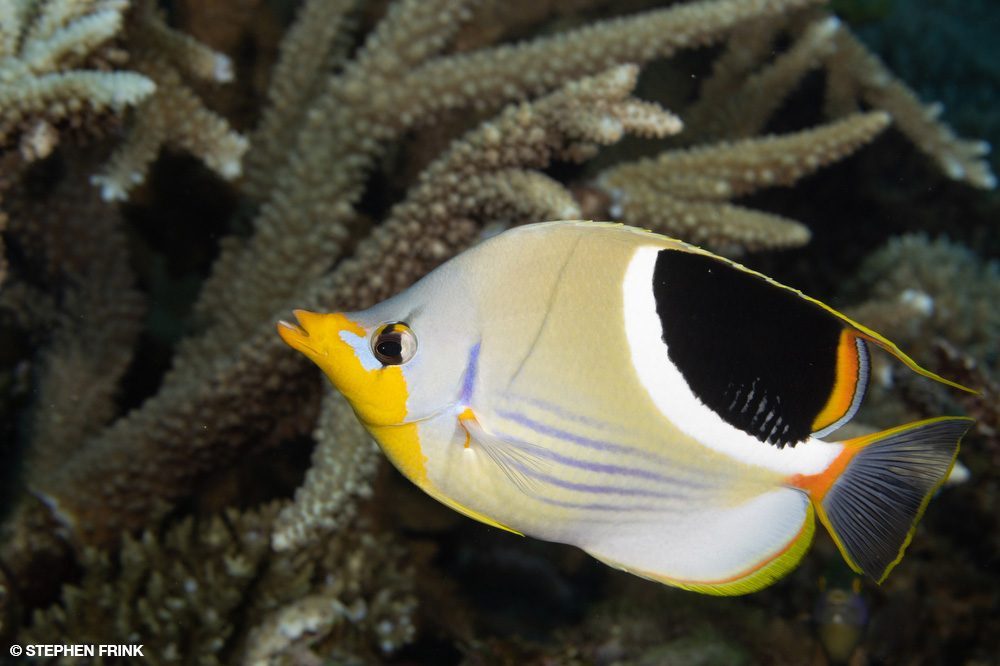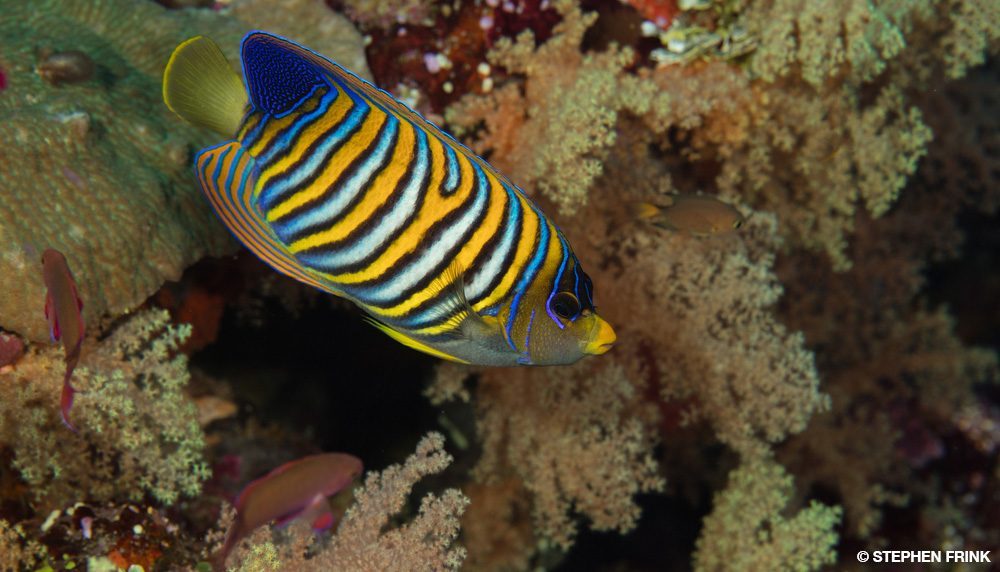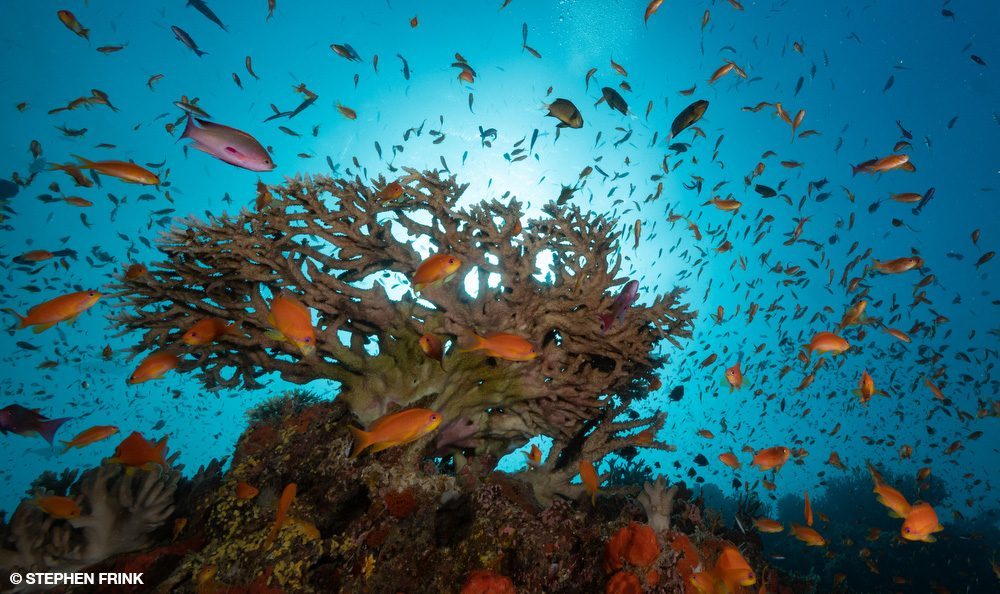A Rainbow Paradise
The island country of Fiji is part of Melanesia in the heart of the South Pacific Ocean. Volcanic activity more than 150 million years ago formed this archipelagic nation of 333 islands, about 106 of which are inhabited.
Deemed the world’s soft coral capital, Fiji is famous for vast, vibrant reefs teaming with marine life. It’s a paradise largely untouched and as immeasurably beautiful above water as it is below. Between dives you can explore lush jungles and waterfalls or enjoy tranquil beaches lined with coconut palms. The Fijian locals are genuinely welcoming and offer gracious island hospitality.
When people mentioned Fiji, I always envisioned brightly colored corals all around me — a vision I saw replicated throughout dive media. So when asked to travel to this soft coral paradise, I was giddy with excitement. Several months later my dive buddy, Nicole, and I boarded a Fiji Airways flight from Sydney, Australia, bound for Nadi, on the main island of Viti Levu. The dreamy imagery I had previously imagined became a reality when I descended for my first dive.
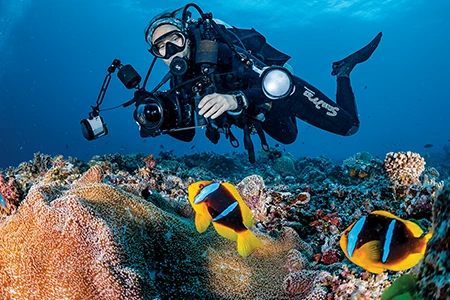
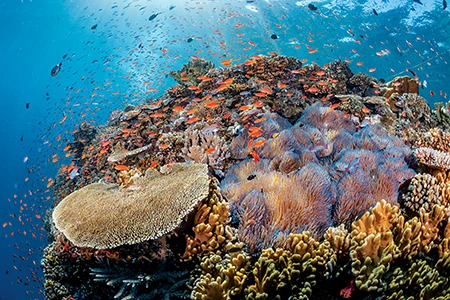
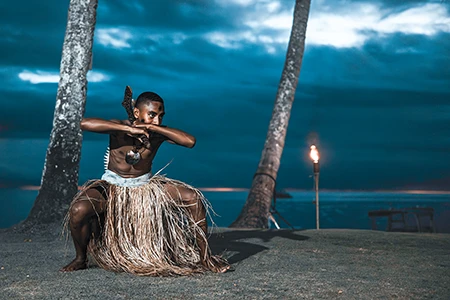
Soft Coral Heaven
We arrived at night, and our driver picked us up at the airport for the 2.5-hour ride to our hotel. When I awoke for our dive the next morning, I pulled back the curtains to discover the incredible view from our room. Having arrived in the dark, we had no idea what was on our doorstep. Looking out over the resort’s gardens from the balcony, we had a clear view of the South Pacific’s calm seas and blue skies.
After a delightful breakfast, we lugged our cameras onto the boat for a three-tank dive. Our first dive spot was the Vatu-i-Ra passage on the north side of Viti Levu. Cruising over the glassy waters between Viti Levu and the tiny Vatu-i-Ra island, we reached the Chile dive site.


I kept my expectations low for this checkout dive, assuming the good stuff was coming later. After I jumped in and grabbed my camera, my guide said before we submerged, “The reef is right behind you. Look!” I put my face in for a quick peek and actually gasped. There were blooming colors, and fish swarmed only a few feet from my fins. I now know that Fiji has more than 300 coral species, 80 of which are soft corals, and the view before me was an undeniable testament to those facts.
Nicole and I descended and started to circle the large, sloping pinnacle. Reef fish, gorgonians, and soft corals surrounded us, so there was no shortage of photographic subjects here. Nicole posed next to a giant crimson sea fan that stuck out of the reef like a huge flame. I was glad to have her there to show the sheer size of this specimen. After what felt like a quick 50 minutes, we surfaced and climbed back aboard.


We next headed to Mellow Yellow, named for the concentration of yellow soft corals growing on the current side of the reef pinnacle. The top of the pinnacle was my favorite. We barely dipped below 40 feet (12 meters) as there was so much action in the shallows. Pink and purple anthias clouded the top reef and squeezed into every gap. There was every kind of coral: leather corals, hard and soft corals, and even large purple anemones hosting orangefin anemonefish. The level of reef biodiversity was unbelievable.
I didn’t think our dives could get any better. We finished the day with a dive at E-6, where our briefing suggested that there would be a bit more current along with more pelagic life. We did a negative entry in front of the reef and followed our guide down to a reef slope. Facing into the current, we gazed into the blue as schooling trevally swept across in the deep. Our guide was also a shark whisperer: As he called with noises through his regulator, two gray reef sharks appeared from the blue.
The following day we visited a site called Pot Luck, which was a real highlight. I have never seen so many clouds of anthias and chromis in the water column. They were so thick I had to wave them out of the way to get photos of Nicole with the lionfish that drifted above the hard corals.
On our last dive of the day we descended onto a bigger reef expanse. It was low tide, and the peaks of the shallow corals poked above the surface. The water clarity was impressive here, letting us admire the fascinating topography of channels full of fans running into the reef structure. The fields of healthy plate and branching hard corals covering the top of the reef seemed to stretch forever. It was the perfect place for split shots in the shallows, and I spent ages floating at the surface in awe of everything around me.

Our final day of diving in the Bligh Waters brought a bit of wild weather, so the dive crew took us to the nearby sheltered reefs, which were fantastic for macro critters. Even though these reefs lacked the colors of the outer ones, there was a lot to see. We dived at two sites, starting at Dua Tale (meaning one more time), a macro heaven with nudibranchs, ribbon eels, and scorpionfish. Our final dive at Dream Maker got quite interesting. Nicole grabbed my arm as we weaved through coral pinnacles and swim-throughs, her eyes wide with excitement.
A tiny roughsnout ghost pipefish, a creature neither of us had ever seen, wafted about, mimicking a piece of algae. With its sublime camouflage, it was nearly impossible to believe this pipefish was a living animal. A pair of thin ghost pipefish was nearby, and following these encounters we had a surprise visit from a banded krait. From vibrant reefs to rare macro critters, the Bligh Waters really has it all.
Fiji’s Garden Island
Fiji Airways connects the best diving in the country via domestic flights from Viti Levu. We returned to the airport for a 90-minute flight to Taveuni Island to the northeast. Taveuni is the third-largest island in Fiji, located on the southern side of the Somosomo Strait. The scenic flight to the island gave us a spectacular view of the fringing reefs from above.
On our first day of diving there, we headed to the Rainbow Reef to drop in for a checkout dive at Fish Factory, where we got a surprise sighting of a hammerhead passing in the blue. Unfortunately, the reefs in this area sustained damage from a cyclone a couple of years ago, yet they were still full of life and reminded us of their role in protecting fragile coastlines. Healthy patches of new growth were coming back, and there was lots of life to see. Octopuses and moray eels poked their heads out of the structures, and large anemones carpeted some sections.

We explored a site named Nuku (meaning sand), home to various triggerfish, fire gobies, garden eels, and peacock mantis shrimp. During our safety stop, a huge school of long-jawed mackerels stormed by with their mouths gaping.
That evening we did a night dive from the shore at the house reef jetty. We encountered many critters, including scorpionfish, frogfish, octopuses, nudibranchs, and two massive stonefish. The stonefish were the biggest I’ve ever seen and a good reminder not to walk barefoot in the shallows.
The following morning we visited Runway, a predominantly hard coral reef that seemed to have sustained minimal cyclone damage. Our next dive was at Rainbow Passage, and I can’t think of a better name for it. We encountered more current, so it was more of a drift dive. The marine life and colors there were reminiscent of the best of the Bligh Water.
On the third day we headed to the Great White Wall. This site requires the right conditions and tides, and we were lucky to find those there on our last day. This wall is one of Fiji’s most revered dive sites, and for good reason. Our guide briefed us to make sure we checked our depth gauge as the wall can “lure you down into the depths.” We descended a steep vertical wall covered in bright white, soft corals that seemed to glow in the darkness of the wall’s shadow. Nicole and I cruised along the wall at 100 feet (30 m), mesmerized by what felt like a snow-covered reef. It was one of the most unique dives I have ever done.
The final dive for this area was at Cabbage Patch, a picturesque reefscape where an abundance of cabbage corals grow together in a field. The corals captivated me until I saw a huge melanistic manta approaching. Our dive group turned at the last second, just in time to see it do a quick flyby. Everyone was stunned by the unexpected sighting. Back on the boat our guide, who had dived there many times, said he had never encountered a manta at this site. It was a magical farewell from our final dive at Taveuni Island.


The Island of Sharks
We arrived back at Nadi airport from Taveuni, and our driver took us 2.5 hours south along the coast to Pacific Harbor. After a 40-minute boat ride across the lagoon, we stepped onto Beqa Island’s sandy shores. It’s famous for its abundance of large sharks, so we knew we were in for an adventure and a high-voltage alternative to the serene beauty of the soft coral reefscapes.
After a checkout dive on the house reef, we departed for a two-tank dive at the famous Cathedral Shark Dive to get up close and personal with the ocean’s apex predators. I had previous experience with shark dives, so I knew what to expect, but Nicole was a mix of nerves and excitement. Following an informative, no-nonsense briefing, we shoved off.
Shark dives can sometimes be frenetic, but this one was very organized. The crew moored the boat at the site, and the feeders dived to prepare the stage. Then we descended together down the line that led to the bottom of the reef structure, which leveled out at 65 feet (20 m). We all lined up and stayed put at the artificial rock wall in front of us. With the reef slope behind us and the rock wall in front, we were ready. Even before the feeding started, there was a flurry of sharks and schools of various fish anticipating the meal. The guides were stationed behind the divers with their poles for safely redirecting away the sharks. Our shark whisperer was out front wearing chainmail gloves.
The show was impressive, and we had an abundance of sharks swirling around in front of the big metal bins of food. Bull, lemon, and tawny nurse sharks glided by us. After about 10 minutes the iconic animal arrived: a big, beautiful tiger shark. The other sharks deferred as if by command as it came in for a fish head.
The tiger shark was a true spectacle, with the amazing patterns on its skin, setting it apart from the monotone gray of the other sharks. After 25 minutes we headed up for our safety stop, overlooking the feeding area below. The reef here was so full of life that even a little blacktip shark cruised around, overshadowed by its bigger cousins. Back on the boat everyone was giddy from their first close-up shark experience.
Shark dives are never 100% safe, but the one at Beqa was well-organized and had a good system in place to prevent accidents. When entering an apex predator’s domain, always use caution and understand the risks despite how safe you may feel. While these dives are not the perfect answer to the issues facing our shark populations, such as shark-finning, a portion of each diver’s fee goes directly back to the surrounding communities, thereby increasing the value of living sharks on the reef as they continue to generate revenue over their life span. Instead of a one-and-done shark-finning act, people are increasingly leaving sharks alive to repopulate.
The following day we departed for a two-tank dive at E.T. (also known as Cyclops). This reef was three large pinnacles full of swim-throughs and tunnels. It was another highlight site for me, with a lot of photo opportunities. The caves and chimneys in the reef were thick with soft corals and sea fans hanging from above like chandeliers. We had to be careful of our buoyancy here, as some spaces were narrow and full of delicate corals below and overhead. The Golden Arches was another spectacular site famous for its yellow soft coral and arch-shaped reef structure. While Beqa is most famous for its shark dive, there was so much else to explore.
We enjoyed a different event each evening that highlighted Fiji’s rich culture and history. There was impressive fire walking, traditional dancing, singing, and the obligatory kava drink ceremony.
As we left Fiji we were overwhelmed with the incredible memories from our two-week trip. The colorful reefscapes, the sharks, and the fish life will be forever etched in our minds. The people of Fiji could not have been more welcoming in each location we visited. We really felt like we found a new family, and every resort felt like home.
Whether you’re a fan of big fish or macro life, this destination has something for you. As they say in Fiji, “Bula vinaka!” This means “the good life,” and we can’t argue with that.
How to dive it
Getting There
Fiji, in the southwest Pacific Ocean, is a four-hour flight from the eastern coast of Australia and a nine-hour flight from California. Fiji’s largest islands — Viti Levu, Vanua Levu, and Taveuni — make up 90% of the landmass. Its two international airports are on the main island of Viti Levu. Most flights arrive at Nadi International Airport. A smaller number of international flights fly directly to Nausori International Airport near the capital of Suva. Several airlines — including Fiji Airways, American, Qantas, and Air New Zealand — offer flights from Los Angeles, California, to the Nadi airport. The nearest chamber is in Suva on the main island of Viti Levu.

Conditions
From July to October the water temperature averages 78°F (25.6°C), and it warms to 82°F (27.8°C) on average from February through June. The rainy season runs from November to April. Currents vary from mild to medium, depending on the location and timing of the tides. Most sites we visited had little current and were easy dives, but some were better suited to experienced divers. The sites with stronger currents are also the most vibrant and offer more probable encounters with pelagic species. The topography is typically either pinnacles with steep walls or sloping reefs; generally, you can find protection from the currents. Having some experience with negative entry, drift diving, and deploying a surface marker buoy is recommended.
Visibility
Water clarity will vary greatly by location. We were fortunate to have 60 to 90 feet (18 to 27 m) of visibility on most dives. The offshore reefs were significantly clearer than the inshore reefs, and the lowest visibility we experienced was around 30 feet (9 m). Poor weather, rainfall, and proximity to mangroves or freshwater outlets such as rivers and streams can affect visibility.
Land-based or liveaboard options: Our itinerary included land-based resort diving to some of the most spectacular locations accessible with daily two- or three-tank dive excursions. That plan allowed us to have a relaxed dive schedule and make time for land-based nature activities and cultural experiences. Fiji has excellent options for liveaboard trips for divers who wish to explore more remote dive locations or perhaps log more dives per day.
En savoir plus
Enjoy more of Fiji’s remarkable reefscapes in this photo gallery and video.
© Alert Diver – Q4 2024
